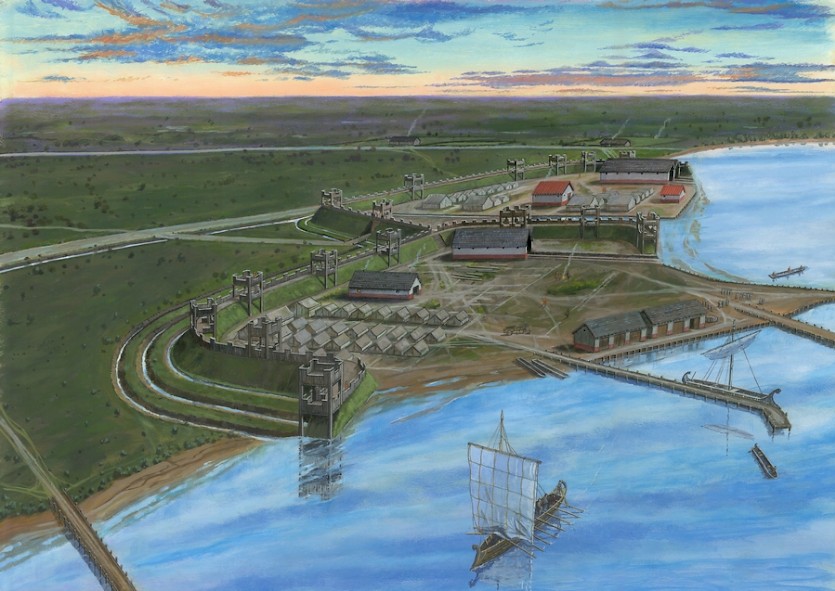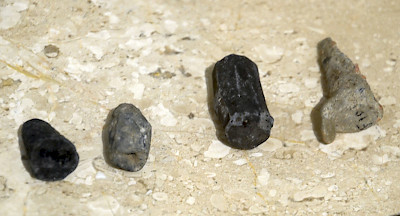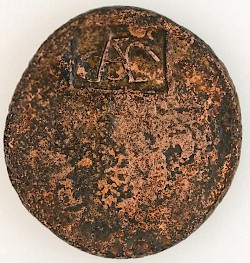Flevum (Velsen?)
Q615397Flevum: Roman naval base among the Frisians, probably identical to Velsen in the Netherlands.
Velsen-1

Like Fectio/Vechten, Velsen was a naval base. It controlled an important watercourse, the Oer-IJ, the northernmost outlet of the river Rhine, and an exit of Lake Flevo. According to the numismatic evidence, the fort was built in 14-16, which suggests that it was meant to support the offensives of the Roman general Germanicus, who conducted several retaliatory campaigns in Germany after the Roman defeat in the Teutoburg Forest in 9.
After a modest beginning (1 ha), Velsen became a pretty large base (2 ha), with a river port, four piers or jetties, and several ship sheds. Reports about a "satellite" on the opposite bank of the Oer-IJ have turned out to be incorrect.
Like almost all Roman forts, there was Mediterranean luxury. Archaeologists found evidence for the use of olive oil and fish sauce (garum) from Andalusia, and wine from France, Italy and the Greek isles Rhodes and Kos. The epigraphic evidence suggests that there were Italians in the fort, but also people from Spain. An intrigueing sherd records the personal name Batavus.
Not far from the military settlement, a small Frisian sanctuary was discovered that was in use from the Early Iron age to third century CE ("Velserbroek", mostly unpublished). It is possible that the divine presence was one of the reasons why the Romans settled at Velsen.

Archaeologists have shown that the more or less trapezoidal fort was attacked at the beginning of the second quarter of the first century. The garrison survived, but seems to have had a close escape: during the fight, new slingshots were prepared. No less than 520 of these metal objects were discovered, and it is possible to reconstruct the pattern of attack. A first Frisian attack was unsuccessful, but a second wave broke into the camp - that it was later than the first wave, is proved by the fact that the Romans now used second-rate projectiles. Had the second attack been coordinated with the third one, across the water, Velsen would not have survived as a Roman fort.

A macabre discovery was the presence of parts of human bodies on top of the layer of waste in the harbor. There was no waste to cover them, which means that corpses have floated in the Oer-IJ and gradually fell apart. There was no one to bury them, because the fort had been evacuated (had it still been occupied, the bodies would have received a decent burial). An exceptionally long man was buried in a well; he may have been a war victim, but there are indications for a ritual burial.
It is extremely tempting to link the archaeological results described above to the Frisian revolt of 28, during which, according to the Roman historian Tacitus, a fort called Flevum barely survived (text) and had to be rescued by legionaries of V Alaudae, which had come from Xanten. This identification, although very tempting, is not completely certain and it is still possible that Flevum will one day be discovered in a different, more northerly part of the modern provinces of Noord-Holland or Friesland. However, for the time being, Velsen is the best candidate.
However this may be, the revolt did not last very long. The Tolsum writing tablet, dated to February 29, may be evidence that the Romans regained control of the Frisians and restored normal economic relations within months. The fort itself was reconstructed in 35: again, a dendrochonological date.
 Velsen, Man in the well, Sandal |
 Velsen, Man in the well, Scabbard |
 Velsen, Man in the well |
 Velsen, Man in the well, skull |
Velsen-2

The military settlement at Velsen was rebuilt, 600 meters to the northwest, after the year 40, when the emperor Caligula visited the Lower Rhine area. This visit, which is well-known from Suetonius's story of the Roman attack on the sea,note can archaeologically be connected to the contemporary founding of Praetorium Agrippinae (Valkenburg), Woerden, and Velsen-2.
Velsen-2 must have served as starting point for a military campaign against the Chauci. In their country, general Aulus Gabinius Secundus reconquered the eagle standard of one of the legions that were defeated in the battle in the Teutoburg Forest. Gabinius received the surname Chaucius. Alternatively, the three settlements were built as a first step towards an invasion of Britain.
The origin of the soldiers in Velsen-2 is not well-known, but at least one fibula was made in Bavaria, which suggests that an auxiliary unit from the Danube was transferred to Germania Inferior.
Velsen-2 must have been evacuated when Claudius ordered Corbulo to abandon all land north of the Rhine (47 CE).note It cannot have been a great sacrifice, as the estuary of the Oer-IJ was silting up.
 Velsen, Roman lamp |
 Velsen, Frisian pottery |
 Velsen, Frisian pottery |
 Velsen, Roman pulley |
Rediscovery
Although the first archaeological finds date back to 1945 (they were found in an anti-tank trench that was part of the Atlantikwall), the first systematic research of Velsen-2 took place between 1952 and 1957, when a tunnel (the Velsertunnel) was built. Velsen-1 was discovered in 1972, and the excavations lasted until 1990, with one final campaign in 1994, when a second tunnel was built (the Wijkertunnel). In 1996-1997, there were small campaigns at Velsen-1, which was declared an archaeological monument in 2002. Attempts in 2007 to open a museum have failed.
Thanks...
...to Arjen Bosman, author of Rome aan de Noordzee. Burgers en barbaren te Velsen (2016).